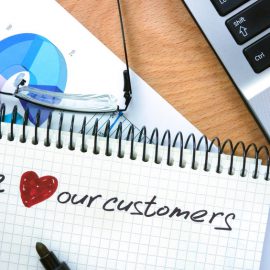Knowing how to identify and classify your customers is essential to good business management. Discover through these few lines how to define your strategic customers and keep them.

Identify your strategic clients
This is not a prospect
First of all, the strategic customer is not usually a prospect. Indeed, you cannot afford to mobilize a large part of your organization for a future potential.
The strategic customer is therefore an existing customer with a high value for you.
What kind of high value? It contributes significantly to your turnover, represents a large volume of your sales, releases a large part of your margins, shows strong payment capacity.
But these financial elements are not the only ones to define a strategic client. They are also those that represent a real challenge for your company and that affect your future.
A strategic customer determines your investments
A strategic account can thus be decisive for investments in research and development, as for the industrial investments or the logistics and delivery efforts that you will deploy.
In addition, you and your strategic client share a common vision of the business and its future.
Finally, this client is mature, that is to say that he perceives an interest in the setting up by his CDMO of a more structured, more open and more proactive relationship. With him, you exchange information beyond the strict framework of your business relationship, you widen your vision field and see the business in a longer term.
Few strategic clients, it’s better!
If you have identified more than ten strategic accounts in your clientele, perhaps you include companies, which, even important, do not deserve this title.
It must indeed be accepted that among all your customers, only a few customers will benefit from a specific treatment and that your Customers will not all be treated the same way.
Putting forward one to five strategic clients seems reasonable, especially as the means deployed for them – and the time spent in particular – is not negligible.
It will therefore be necessary to make choices, even if it is not always easy.
To help you, you can create a table, listing the criteria mentioned in the definition of the strategic account (financial aspects, strategic alignment, maturity) by ticking the customers who fulfill these conditions.
Added to this is your intuition, your feeling of being able to unfold a closer relationship with this or that client.
Assign a Key Account Manager to follow your strategic customers!
It is not enough to dedicate a sales force to a strategic customer, to claim to have a key account organization.
Apprehending this type of client requires the presence of a Kam (Key Account Manager).
And this Kam must not be a simple sales rep.
We are talking here about a manager, a person who centralizes and who, as such, has as much the commercial business side as the one of the customer relationship or the transversal team animation.
Find here our article on the expected profile of the Kam.


